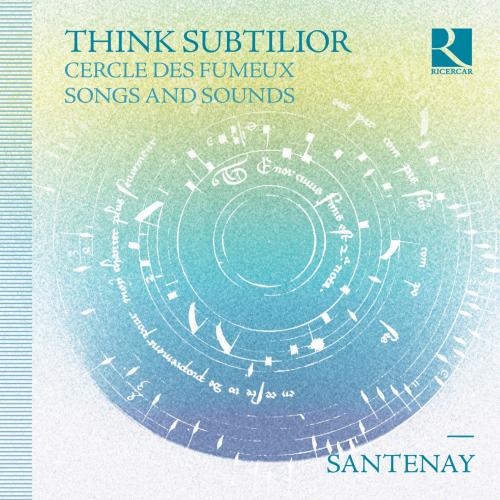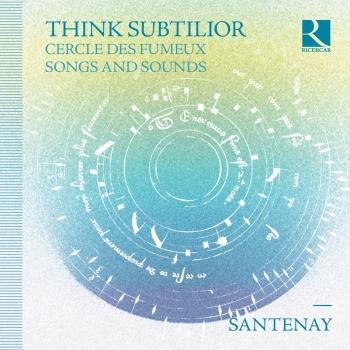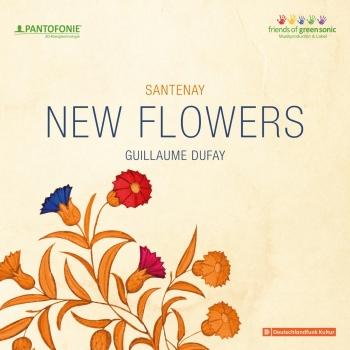
Think Subtilior (Cercle des fumeux & Songs and Sounds) Santenay
Album info
Album-Release:
2017
HRA-Release:
25.08.2017
Album including Album cover
- 1 Haze 01:07
- 2 Onques ne fu si dure partie 07:20
- 3 Ephemeral 00:35
- 4 Fumeux fume par fumee (Intabulation After Solage) 02:10
- 5 Puisque je sui fumeux, plains de fumee 07:59
- 6 Emanation 02:56
- 7 Le basile de sa propre nature 10:12
- 8 Pres du soloil deduissant s’esbanoye (Diminution After Matteo da Perugia) 04:41
- 9 Exhalation 01:44
- 10 Fumeux fume par fumee 07:00
- 11 Tout par compas 01:50
- 12 Perfume 01:08
- 13 Le ray au soleyl qui dret som kar meyne 02:32
Info for Think Subtilior (Cercle des fumeux & Songs and Sounds)
The Ensemble Santenay invites us on an enthralling journey through the French Ars Subtilior repertory of the fourteenth century. These pieces with their often esoteric texts are presented here as a genuine sound project. The musicians have devised sound frames for the compositions on this album, to link them with each other and take them further than usual. These sonic atmospheres are realised with the aid of sounds produced by instruments, scraps of pieces of music, sometimes a single voice.
Ensemble Santenay
Ensemble Santenay
The fascination with music of the middle ages led to the creation of Ensemble Santenay in 2004. Initial independent exploration of the repertoire led to several years of collaboration with medievalist pioneer Kees Boeke as a part of a study at the academy of music in Trossingen, Germany.In 2008 the ensemble relieces it’s Debut CD Santenay- LIVE. Numerous Performances led these four friends from, Israel, France, Germany and Transylvania throughout Europe. The origin of the Ensemble’s name is a town in the former duchy of Burgundy.
Santenay sets Medieval and Early Renaissance music on instruments typical for the period, that is, on the recorder, the vielle, the lute and the organetto. In the original manuscripts there are no indications of instrumentation; therefore it is open to the musicians to decide on the most suitable instrument for each part. In addition to countless monodies, many three-part (and some two- and four-part) works were composed by fourteenth and fifteenth centuries court musicians.
The core of each piece is the tenor line (from latin: "tenere" meaning "to hold"). Santenay usually sets the tenor voice with the vielle, which, as a string instrument, is best suited for the long notes of the textless melody.
In perfect counterpoint to the tenor is the cantus line (from latin: "cantare" meaning "to sing"). When a text is present, Santenay sets this line with voice and an additional instrument such as the recorder or the organetto, which supports the singer and can take over the cantus in instrumental interludes.
The contrasting voice to the tenor is the countertenor, which offers divergent rhythms and harmonic elements with an improvisatory character. Santenay generally sets this part with the lute.
This album contains no booklet.











